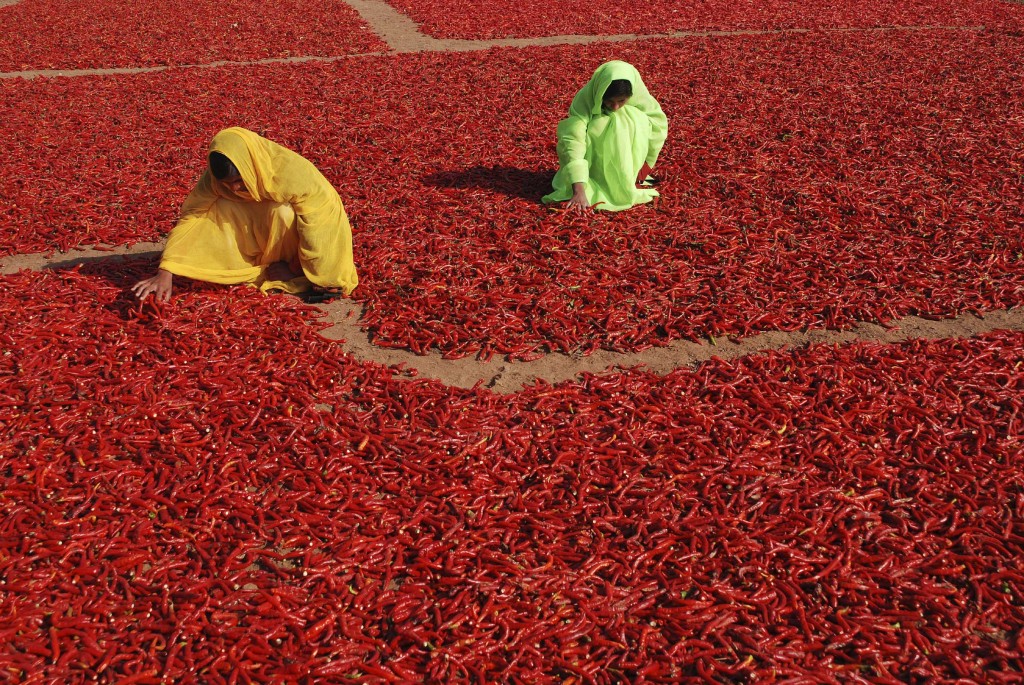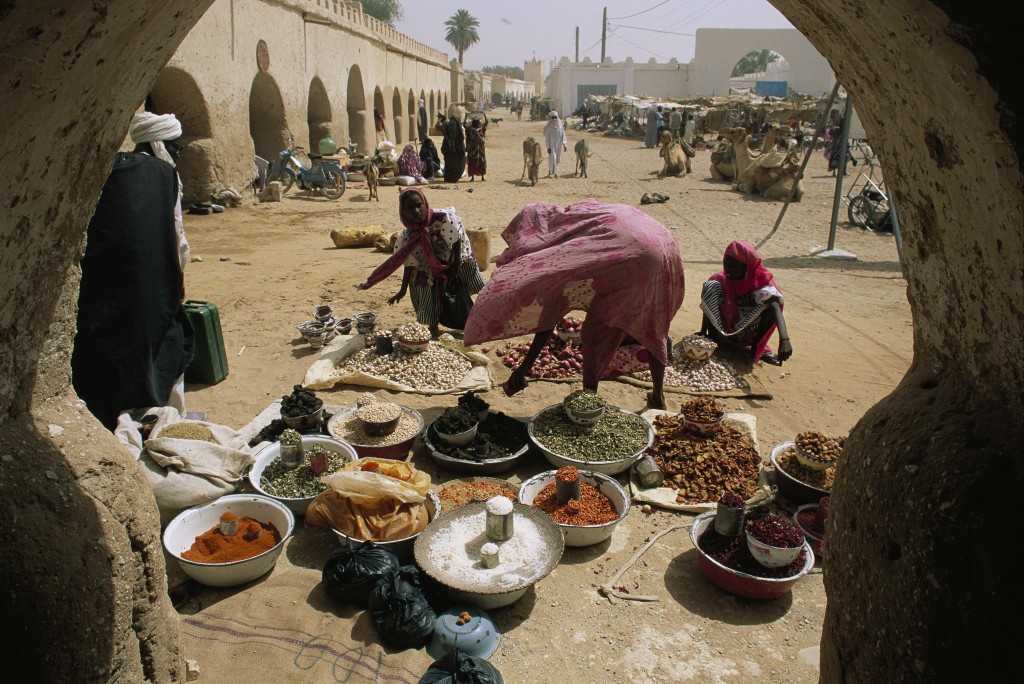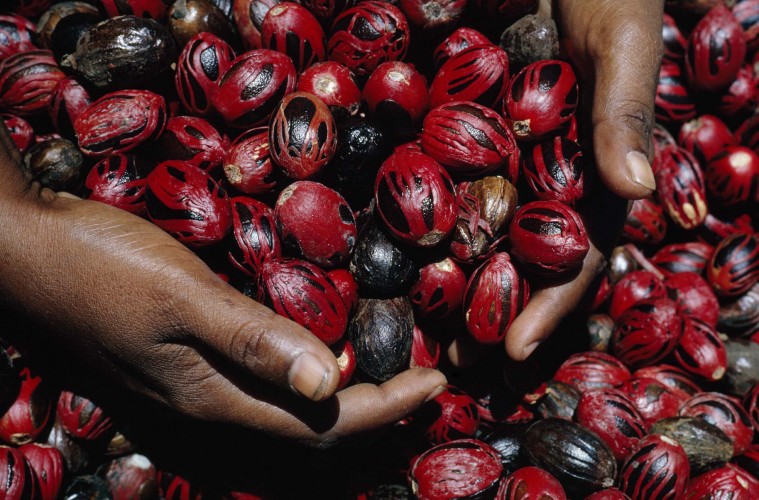
@SHIVJI JOSHI/National Geographic Your Shot
Two women are shuffling red pepper which were wet by the dew drops last cold winter night in a village near Jodhpur,Rajasthan,India.Red peppers are plucked from plant and spread in field to dry for making spice powder.This spice powder enhances the taste of food.
Spezie mon amour. Peperoncini, pepe, cumino, coriandolo, cannella. Per loro si sono fatte guerre, attraversati mondi lontani, inventato la bellezza in un piatto. A questi esotici sapori, ai loro colori, al lavoro che è necessario per prepararli è dedicata la mostra al Museo d’Arte Orientale di Torino. Fino al 27 settembre 73 scatti provenienti dal National Geographic Italia ripercorrono le tappe delle rotte marittime, i mercati, i luoghi dove si coltivano noce moscata, vaniglia, zafferano, chiodi di garofano, cannella e sesamo. Per secoli sono state più preziose dell’oro, sono state il motore di commerci e scambi. Tra i fotografi presenti in mostra Steve Winter e Joel Sartore, David Evans e Michael Yamashita.
Orario di apertura: mar-ven 10 -18 sab 11-20 dom 11-19 (la biglietteria chiude un’ora prima) chiuso il lunedì
t 011.4436928 – mao@fondazionetorinomusei.it – www.maotorino.it Facebook MAO. Museo d’Arte Orientale | Twitter @maotorino

@GeorgeSteinmetz/NationalGeographic Dried spices and staples like garlic, peanuts, onions, pepper, salt, & okra are popular items in the open-air market of Faya Largeau. Women here prefer the veils of the Moslem world, but in the bright colors of tropical Africa. The buildings in the old market are made of mud-brick, with arches in the shape of a keyhole.

